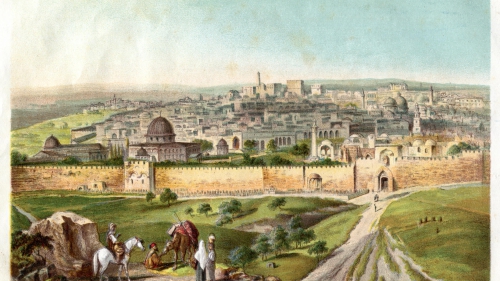Islamic Golden Age: Advancements in Medicine
Most students of history have only a passing familiarity with the Islamic Golden Age in the Greater Middle East, from about 750 to 1258. Advancements in medicine, algebra and astronomy; influential figures like Avicenna and Averroes: these asides in the traditional story of the late Middle Ages and early Renaissance only gloss the surface of one of the most important periods of world history.
This crucial 500-year history was headquartered in Baghdad but impacted the wider world. Our course, “The History and Achievements of the Islamic Golden Age,” tells the story and the accomplishments of this great period in human civilization. Taught by acclaimed lecturer Eamonn Gearon, these 24 remarkable lectures offer brilliant insights into the Islamic Golden Age. The philosophers, scientists, inventors, and poets of the Abbasid Empire paved the way for the Renaissance and continue to affect our world, and The History and Achievements of the Islamic Golden Age will forever change your perspective on world history.
The Abbasid Empire, which ruled the Middle East as well as much of Northern Africa and Central Asia in much of the Middle Ages, is a bridge between the ancient and modern worlds. The Abbasid Empire was an international, multicultural hub of trade, travel, education, art, science, and much more. Just a few of the many events and achievements of the era include: Advancements in mathematics, including the birth of algebra and new insights into geometry and trigonometry.
The Abbasid Empire also saw the origins of the scientific method, along with the development of chemistry, physics, and astronomy as discrete fields of inquiry. The Islamic Golden Age contributed to the invention of the modern “teaching hospital” and a medical encyclopedia that served Europe for the next 600 years.
Eamonn Gearon also uncovers the Islamic Golden Age’s development of ontological philosophy that served future Jewish, Christian, and Muslim theologians concerned with theology and the relationship between faith and reason. The epicenter of the age was Baghdad and its House of Wisdom, the world’s preeminent center for learning, translation, and original research at the time. Thanks to the House of Wisdom, scholars, scientists, artists, and thinkers flourished.
The Abbasid Empire was a highly educated, highly mobile society, and you’ll follow in the footsteps of many travelers as they made their way around the empire, from the Mediterranean to Central Asia.
This lecture comes from the course The History and Achievements of the Islamic Golden Age.
Topics: Avicenna (Ibn Sina), Health, History, Islamic Golden Age
Views: 14461
Related Suggestions

















